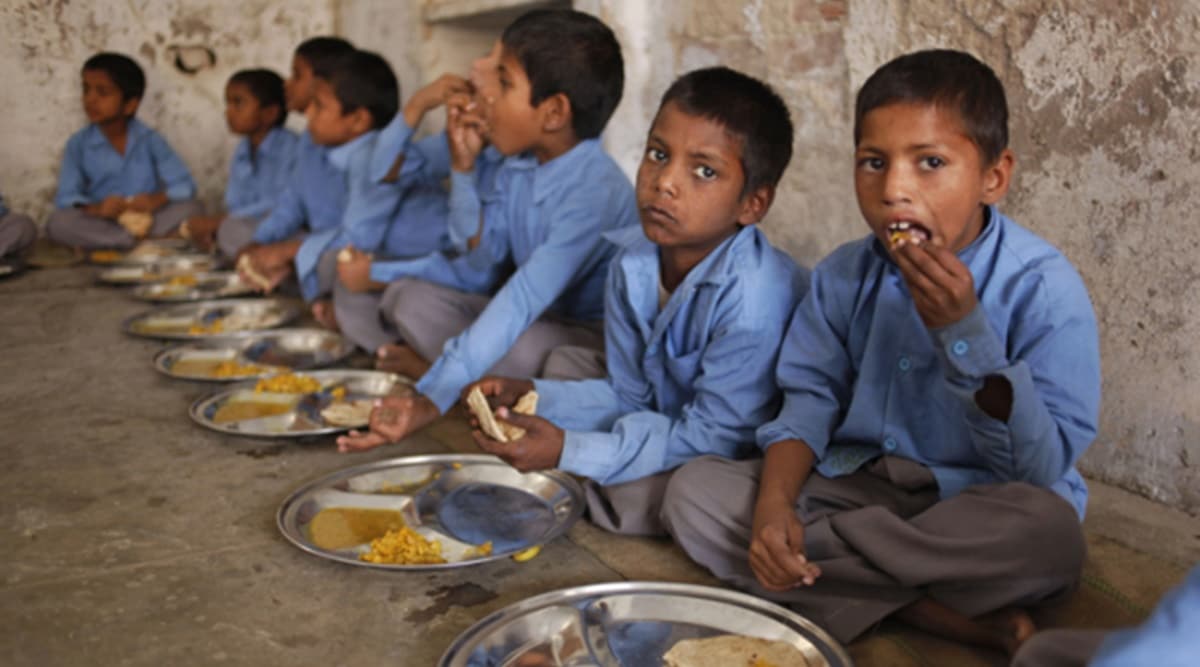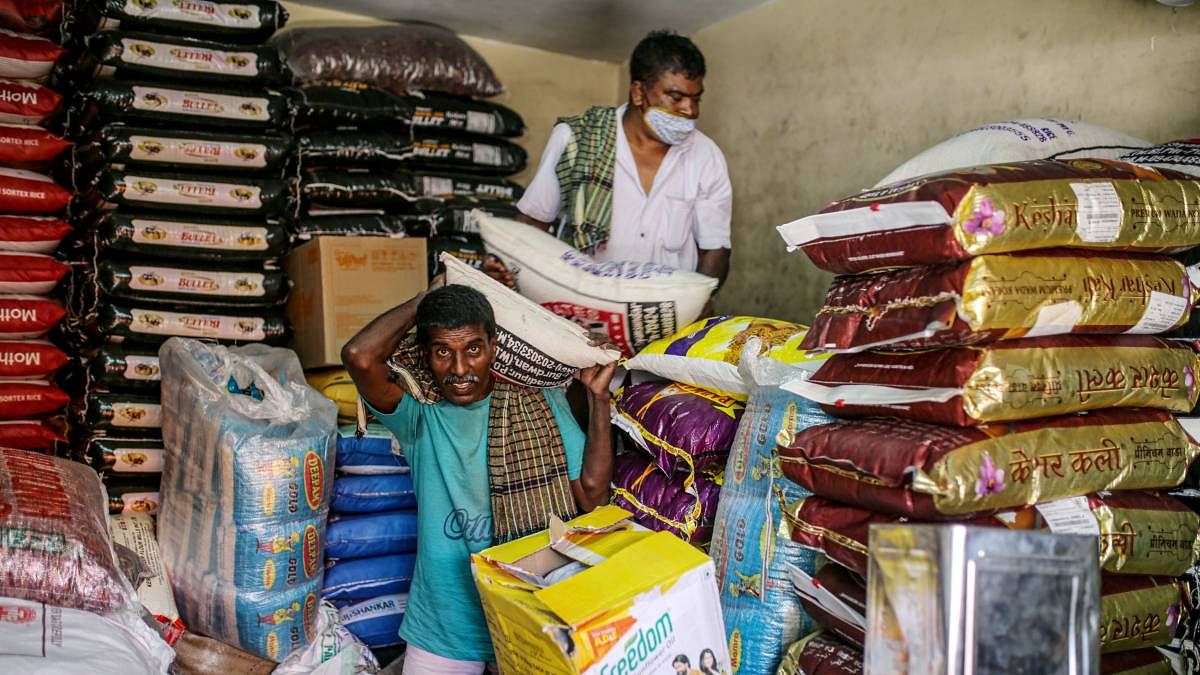All PDS Beneficiaries to Receive Fortified Rice in the Coming Months 2023

All PDS Beneficiaries to Receive Fortified Rice in the Coming Months 2023
A food ministry official said on Tuesday that the government is likely to meet its goal of providing 35 million tonnes (MT) of iron-fortified rice to the beneficiaries under the National Food Security Act (NFSA) by the deadline of March 31, 2024.
Sanjeev Chopra, the food secretary, stated at a selective media briefing that “we will be universalizing the rice fortification programme in the public distribution system (PDS) in the next few months.”22 districts that consume wheat would not be included in the 660 districts that are covered by the PDS if rice fortification is completed by the end of the year.

All recipients under the PDS were to get fortified rice by the end of FY24, according to a decision made by the cabinet committee on economic matters in April 2022. 1.75 MT of fortified rice was provided under the auspices of PM Poshan and Integrated Child Development Services (ICDS) as part of phase I of the plan to eradicate anaemia, which was carried out between 2021–2022.
10.6 MT of fortified rice was given under the PDS in 269 “aspirational and high burden” districts during phase II of the scheme, which was carried out in 2022–2023. States have lifted around 2.9 MT of fortified rice for the ICDS and PM Poshan programme.
Rice fortification aids in achieving nutritional security and boosting the amount of vitamins and minerals in the diet.
By 2024, it is predicted that the NFSA’s initiative for fortified rice will cost $2,700 crore annually. The additional expenditure would be included in the expected $2 trillion food subsidy budget for the national government for FY24.
According to the official, 439 districts are receiving rice infused with vitamins and minerals including iron, folic acid, and vitamin B12.24 MT of rice are currently available for distribution through PDS thanks to the Food Corporation of India (FCI) and state organisations.
Since the 2020–21 season (October–September), FCI and agencies in states that adhere to DCP states’ decentralised procurement policy have begun purchasing fortified rice.

The capacity of mixing fortified rice at the moment is 15.6 MT per month, and there are 18,227 mills with blending infrastructure.
According to a representative of the food ministry, the Food Safety and Standards Authority of India calculated that the benefits of fortifying rice resulted in yearly savings of roughly ‘49,800 crore in health care costs.
Malnutrition also costs the nation over ‘77,000 crore each year in lost productivity, disease, and health. According to the FSSAI, more than 70% of people only get half the daily required amount of micronutrients.
The World Health Organisation (WHO) had previously claimed that micronutrient fortification of rice might be an efficient, easy, and affordable way to enhance the nutritional status and health outcomes of populations that frequently consume rice.
In a major policy move aimed at combating malnutrition and micronutrient deficiencies, the government has announced that all beneficiaries of the Public Distribution System (PDS) will receive fortified rice in the next few months. The decision represents a significant step in public health, targeting the underserved communities who primarily rely on the PDS for their food security.
Rice fortification is the practice of increasing the content of essential micronutrients in rice, making it more nutritious. Vitamins such as folic acid, various forms of vitamin B, and minerals like iron and zinc are commonly added.
These nutrients are often lost during the milling process and storage, and fortification seeks to reintroduce them to help address common deficiencies.

The Public Distribution System in [Country Name] is one of the world’s most extensive food security systems, aimed at providing subsidized food and non-food items to the country’s poor. It covers millions of people and is an essential part of the social safety net.
Under this system, beneficiaries are entitled to essential commodities like rice, wheat, and kerosene at subsidized prices.
Malnutrition is a pervasive issue in developing countries, leading to a variety of health problems such as stunted growth, weakened immune systems, and even cognitive deficiencies in children. Fortified rice can play a crucial role in reducing the incidences of malnutrition and its consequences.
Many people may consume enough calories but still suffer from “hidden hunger,” which is a lack of essential vitamins and minerals. This can lead to anemia, increased susceptibility to infections, and various other health issues. The fortified rice initiative is poised to alleviate these problems.
To ensure smooth implementation, the fortified rice will be introduced in a phased manner. Initial pilot programs are already underway to measure the impact and logistical requirements.
The government is also collaborating with rice mill owners and the private sector to facilitate the mass fortification of rice. Stringent quality control measures are being put in place to maintain the nutrient content during storage and distribution.
For the program to be successful, it is crucial to educate the beneficiaries about the benefits of consuming fortified rice. This would involve community outreach programs, advertisements, and the involvement of local health workers.
The fortification process will inevitably increase the cost of rice production. However, it is considered a worthwhile investment in public health.
Cultural beliefs and a lack of awareness may initially cause some resistance to adopting fortified rice. Robust educational programs are vital for overcoming this challenge.
The decision to provide all PDS beneficiaries with fortified rice in the coming months is an ambitious yet necessary move. Given the prevalence of malnutrition and micronutrient deficiencies in disadvantaged communities, this initiative holds the potential to significantly improve public health outcomes.

Successful implementation will, however, require meticulous planning, public awareness, and stringent quality control. Nonetheless, the fortified rice program represents a giant leap forward in the fight against malnutrition and poor health.




